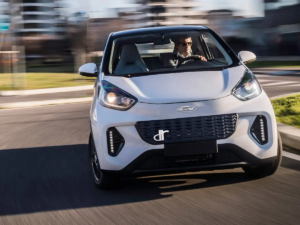It is an open secret that the electric cars of the future will look a little different than they do today. With the Concept Recharge, Volvo shows that the interior in particular is supposed to change radically. But there are also changes outside.

It is no secret that research into electrified vehicles is being carried out behind the scenes of practically all of the world’s major automobile brands. Sporadically it even happens that it is possible to look at what should be the rule in the future. This is also the case with Volvo. The Swedish manufacturer has now presented the Volvo Concept Recharge, which shows a new design language for the next generation of fully electric Volvo vehicles – with optimized space and a 15-inch touchscreen in the interior.
VOLVO CONCEPT RECHARGE: GREETINGS FROM SCANDINAVIAN DESIGN
The elimination of the internal combustion engine gave the designers the opportunity, according to the manufacturer, to redefine the proportions of future Volvo models. The consequence of the new concept model, which is positioned between the Volvo XC60 and the Volvo XC90: the manufacturer has modified both the space in the interior and the aerodynamics. The wheelbase and wheels are larger in this context. The body overhangs at the front and rear, however, are shorter. This results in significantly more space in the interior, especially between the front seats.
In contrast to the current generation of electric cars from Sweden, which still shares the floor pan with conventionally powered models, the study presented here is based on a technology platform designed exclusively for electric drive. It has a flat base under which the battery pack is located. The sloping roof line and the lowered bonnet are also noticeable. Both should reduce the air resistance and thus also the power consumption; for more reach. Specific details about the engine and the range are not yet known. However, the aim is for Volvo’s electric cars of the future to be able to drive at least 900, and even 1,000, kilometers.

Under the motto “less, but better”, the Volvo designers have also decided to invent a new design language. The manufacturer has removed unnecessary elements, which is particularly evident on the simple radiator grille. The optical highlight are the LED headlights in “Thor’s Hammer” design. At the rear of its new concept vehicle, Volvo relies on brand-typical, vertically aligned taillights that expand at higher speeds. This should also benefit better aerodynamics.
And of course the Volvo Concept Recharge is also prepared for autonomous driving . For this purpose, there is a LiDAR sensor developed by Luminar on the roof of the vehicle, which collects data on the vehicle environment and plays a key role in Volvo’s future autonomous driving technology.
HUGE DISPLAY IN THE INTERIOR
The central unit in the interior is a 15-inch touchscreen in portrait format. It serves as the center for the newly networked infotainment system. You won’t find any physical buttons in the interior. In a certain sense, Volvo is thus following electric car pioneer Tesla, where large screens in tablet format have long been standard. The screen is flanked by sustainable, natural materials. This is how it was possible to create “a truly Scandinavian living room atmosphere”, as Volvo’s design boss Robin Page calls it.

On the software side, Volvo wants to work even more closely with Google in the future. The next generation of the infotainment system, which Volvo calls VolvoCars OS, will be based entirely on Android. There should be regular updates to keep the system up to date. Operation should be based on those functions that are already familiar from Android smartphones.
The next generation of fully electric Volvo models is also connected to the smartphone at any time: the mobile phone is not just used as a key; Users can also control many functions via the Volvo Cars app. In this way, the electric vehicle can be preheated and preconditioned remotely. If the closest charging station is found, the charging process is monitored and paid for. A connection with personal devices at home is also possible.

Incidentally, you will look in vain for combustion engines in future generations of Volvo vehicles. The Swedish manufacturer has the clear goal of no longer offering cars with gasoline or diesel engines by 2030 . And there should also no longer be any discounts on new cars .


